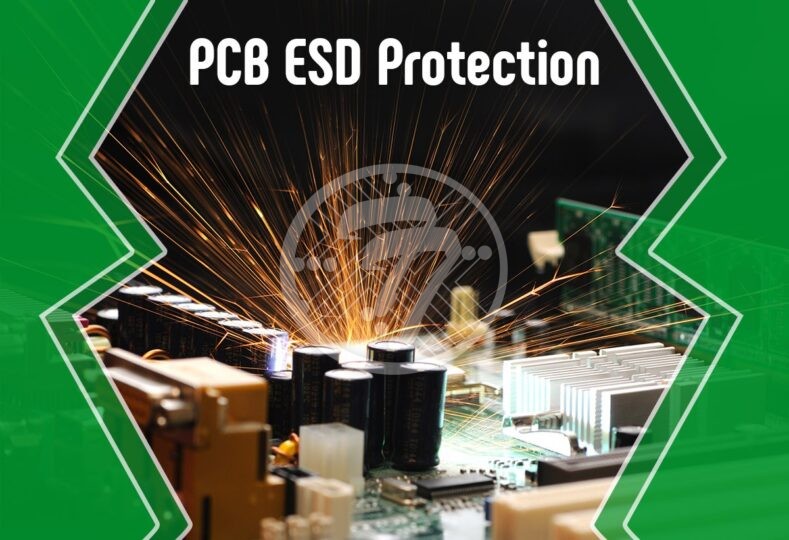Ensure Maximum PCB ESD Protection for Electronics Assembly!

Electrostatic Discharge or ESD as it is popularly known as, occurs when the surface of an object builds up an abundance of electrons. In turn, this creates a voltage potential. When such an object comes in contact with another object that has a lower voltage potential there is a jump of charge, which is experienced as a small electric shock.
In day-to-day life we have all experienced ESD when we have touched a metal object or even while accidently brushing past someone. While we may not pay too much attention to it, the fact remains that ESD can prove to be devastating for electronic components. Especially with miniaturization, as circuits get smaller and more compact, the susceptibility to ESD goes up. The ESD Association has estimated that as many as 25% of electronics that are damaged for unknown reasons could have ESD as the root cause. In fact, ESD is estimated to cost the electronics industry a whopping $5 billion a year.
If PCB ESD protection is disregarded during the electronic assembly process, you could be staring at the following:
- Component failure on PCB
- Circuitry damage
- Increased cost of production
- Loss of customer confidence
PCB ESD Protection Strategies
When it comes to offering maximum ESD protection for electronic assemblies, there are three levels of protection that are recommended. These include:
- Facility ESD protection zones.
- Built-In ESD protection for circuits.
- ESD-Controlled circuit board storage and transportation.
Let us look at each of these in detail.
Facility ESD Protection Zones
Electrostatic Discharge protected areas go a long way in safeguarding electronics. This is essentially done by grounding conductive materials and workers in ESD-susceptible production areas.
Some of the best practices in this regard use a combination of measures as below:
- Wearing anti-static wrist straps or heel straps. This is an easy way to dissipate static from people. The straps can be connected to a grounded line.
- Using conductive floor mats. These mats are helpful in discharging any static that has built up on equipment or footwear.
- Use of anti-static clothing and shoe coverings.
- Temperature and humidity maintenance. Essentially humidity is maintained between 40-70 percent on the production floor. High humidity prevents static from building up. However, care needs to be taken to see that humidity isn’t excessive as that can impact moisture-sensitive parts. Temperature is ideally maintained between 22-18°C.
- Connecting racks and equipment to the ground. People are required to discharge themselves before they enter sensitive areas.
- Removing sources of static. This involves limiting insulating material such as paper, wood and plastics in sensitive areas.
- Periodic inspections. It is imperative that ESD levels are monitored periodically and adherence of all guidelines by employees is undertaken. In fact, regular training sessions are the need of the hour so as to sensitize employees, both existing and new.
Built-In ESD Protection for Circuits
This kind of protection is imperative as it reduces the risk of circuit failure or damage during the PCB assembly phase. Some of the practices to follow include:
- Selecting transient circuit protection device in order to meet the PCB parameters.
- Ensuring that the suppressor is placed at the point of ESD penetration.
ESD-Controlled Circuit Board Storage and Transportation
It is believed that the risk of ESD is eliminated once the production stage is successfully crossed. The fact however remains that boards also need to be protected during storage as well as transportation.
Some of the best practices to follow at this stage include:
- Using anti-static packaging material such as anti-static bubble wrap, foam and ESD bags. ESD bags are modeled on Faraday Cage principle and are made with fine layers of metal. They go a long way in sealing its contents from external changes.
To sum up
ESD is an invisible threat that lurks in electronics manufacturing facilities that can have serious consequences. ESD Management practices are effective as they help in the following:
- Reduce defects.
- Improve yield.
- Ensure that the need for re-work is addressed.
- Improve reliability of the products.
- Enhance company reputation.
The above three pronged practices can aid in effective ESD management and keep the many issues associated with ESD at bay.
Technotronix offers electronics manufacturing services combining state-of-the-art technology and advanced engineering to deliver unparalleled quality and service. We are upgrading ourselves every day and offering the finest circuit board assembly, circuit board designs and fabrication services to our clients. For more information, contact us via email at [email protected] or call us on 714/630-9200.






